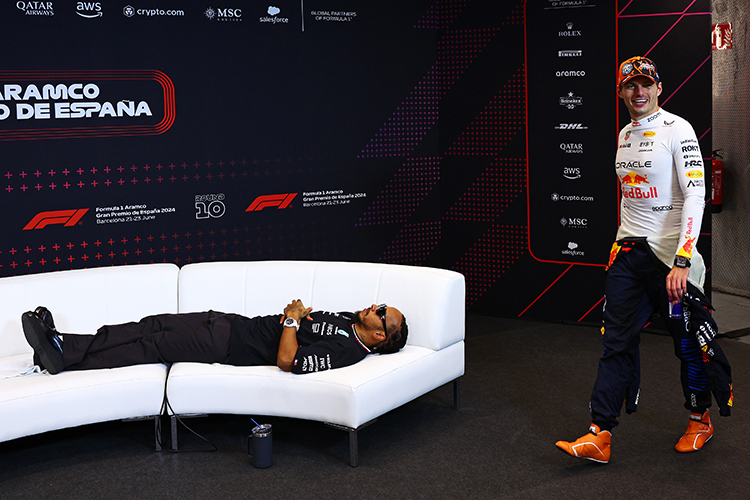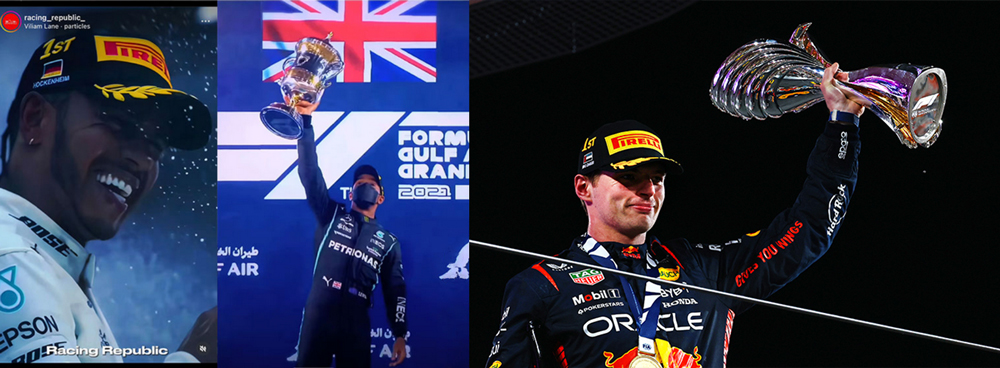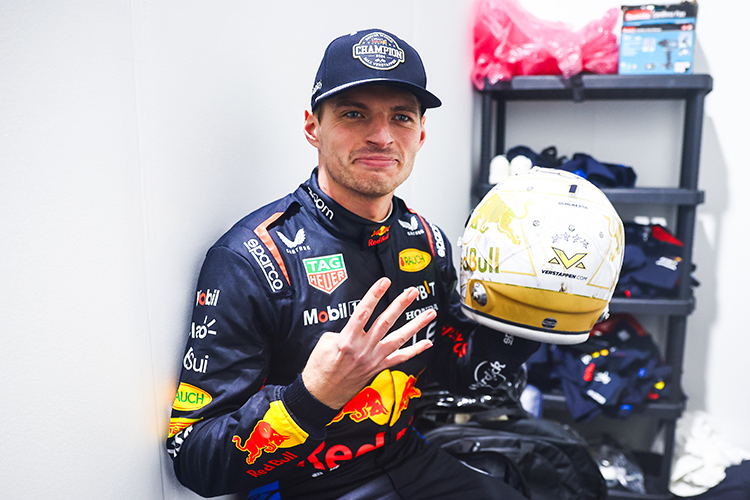How to Win in Formula 1: Understanding the Points System, Championship Goals, and the Path to Victory
How to Win in Formula 1: Understanding the Points System, Championship Goals, and the Path to Victory
If Formula 1 is a 200 mph chess match, the championship is the checkmate. Yes, you need a fast car and a fearless driver. But you also need a ruthless understanding of how points work, when to gamble, and when to bank a safe finish. Here’s your entertaining, all-in-one guide to the math, mindset, and mechanics of winning in F1.
1. Points 101: What Actually Scores
Grand Prix points (full-distance races)
- P1: 25
- P2: 18
- P3: 15
- P4: 12
- P5: 10
- P6: 8
- P7: 6
- P8: 4
- P9: 2
- P10: 1
Bonus: Fastest lap
- +1 point for the fastest lap, but only if you finish in the top 10.
- No fastest lap point in the Sprint.
Sprint race points
- Top 8 score: 8-7-6-5-4-3-2-1.
- The Sprint is a standalone race; its result does not set the Grand Prix grid (as of 2024–2025).
Constructors’ points
- A team’s score is the sum of its two drivers’ points each session (Grand Prix and Sprint).
- Constructors’ standings drive prize money, prestige, and development head-starts under testing restrictions.
Tie-breakers (Drivers and Constructors)
- Countback: most wins, then most P2s, then P3s, and so on down the finishing positions.
Classified finishers and DNFs
- You can score even if you don’t take the checkered flag, provided you’ve completed at least 90% of the race distance and are classified in a points position.
Shortened races: reduced points
- Reduced points are awarded only if a suspended race cannot be resumed.
- If more than two green-flag laps are completed but less than the full distance, these scales apply:
- More than 2 laps but less than 25% distance: top 5 score 6-4-3-2-1
- 25% to 50%: top 9 score 13-10-8-6-5-4-3-2-1
- 50% to 75%: top 10 score 19-14-12-9-8-6-5-4-3-2
- More than 75%: full points
Penalties and disqualifications
- Time penalties and post-race scrutineering decisions can reshuffle points long after the flag. Keep the car legal; respect track limits; serve penalties cleanly.
2. The Championship Math: Wins vs. Consistency
The Sunday ceiling
- Maximum haul on a Grand Prix Sunday = 26 points (win + fastest lap).
- On Sprint weekends, you can add up to 8 more in the Sprint.
Consistency beats chaos
- Banking P2s (18 points) week after week will usually outscore a win-or-bust approach.
- Example logic: Alternating P1 (25) and DNF (0) averages 12.5 points per race. Two steady P3s (15 each) yield 30 in the same span. Reliability is king.
Know your targets
- Titles are often won not just by big Sundays, but by minimizing bad ones. Turning a potential P9 into P7 is a quiet victory that shifts the title tide over 24 races.
The art of the fastest lap
- Only chase it if you can pit without losing a position, have a tyre advantage, and won’t invite late-race chaos. One point matters over a season—don’t throw five away to gain one.
3. Race Weekend Blueprint: How Champions Score
Qualifying: set the table
- Track position is currency. A strong Saturday (or Friday, on Sprint weekends) simplifies strategy and reduces risks in traffic, dirty air, and mid-pack melees.
The start and Lap 1
- Win the launch; avoid the lottery. Gaining two spots is great; losing your front wing is season-ruining. Think long game—especially in title fights.
Tyres and pit windows
- Undercut: pit early to gain track position on warmer tyres.
- Overcut: stay out longer if your pace is strong and traffic is clear.
- Safety Car/VSC: free or cheap pit stops can decide races. Stay flexible.
Pace management: fuel, tyres, and energy
- Leaders control the tempo. Lifting and coasting, tyre nursing, and ERS deployment patterns decide whether you attack now or strike five laps later.
Team play
- Split strategies to cover rivals. Use your cars to pressure opponents, create undercut threats, and secure double points. Team orders are legal—awkward, but effective.
Penalty avoidance
- Track limits, unsafe releases, speeding in the pit lane, weaving—tiny mistakes, big costs. Title runs are lost on five-second penalties.
4. Season Strategy: The Path to Victory
Reliability over heroics
- Zero DNFs is a fantasy—but minimize them. Bulletproof operations, clean pit stops, and careful component management are worth more than a risky lunge for P1 in Turn 1.
Component pool management
- Power unit and gearbox allocations are limited across the season. Exceeding them means grid drops. Plan your “penalty races” at tracks where overtaking is easiest to limit the pain.
Development race under the cost cap
- Upgrades must be efficient, legal, and timely. Under Aerodynamic Testing Restrictions (ATR), teams lower in the standings get more wind-tunnel/CFD time—the earlier you build a points cushion, the harder you become to catch.
Optimize for track profiles
- Know your strengths: high-speed vs. slow-speed circuits, kerb-riding, tyre degradation. Bring tailored wings, floors, and cooling solutions. Score big where you’re strong; limit losses where you’re weak.
Operations and data
- Champions win with execution: strategy models, pit stop precision, robust reliability analytics, and clear driver-engineer comms. Margins in F1 are measured in tenths and seconds over months.
Driver craft and mindset
- Start-line judgement, tyre whispering, wet-weather feel, and pressure handling. Title campaigns demand speed, calm, and a memory like goldfish for bad days.
5. Constructors’ Championship: The Team Game
- Two cars in the points beat one hero and one DNF. A P4 + P6 often trumps a P2 + DNF in raw score.
- Strategy splits can protect against Safety Car roulette.
- Pit stop excellence turns close fights into banker points. Aim for sub-2.5s consistency over occasional hero stops.
6. Smart Risk: When to Attack, When to Bank
- Attack when:
- You have clear tyre or pace offset.
- The pass avoids tyre-killing dirty air phases.
- You can stop rivals undercutting you by track position.
- Bank when:
- You’re in a title fight and the risk of contact outweighs the gain.
- You’re on component life support and a finish matters more than marginal positions.
- The car is overheating or tyres are on the edge—nurse it home.
7. FAQs and Myths
- Do Sprint results set the GP grid?
- No. As of 2024–2025, Sprint has its own qualifying and awards points separately. GP grid comes from standard qualifying.
- Can you score if you don’t see the flag?
- Yes, if you completed at least 90% of the race distance and are classified in the top 10.
- Is chasing fastest lap always worth it?
- Only if you won’t lose a place (or time) box-to-box and conditions are safe.
- Has anyone won the Drivers’ title without winning a race?
- No. Consistency is powerful, but at least one win has always featured in a champion’s season.
- Are reduced points automatic in short races?
- Only if the race is suspended and cannot be resumed. If it restarts, full points apply based on the final classification.
8. The Title Winner’s Checklist
- Car: reliable base, strong tyre usage, clean pit stops.
- Qualifying: consistent front-row threats or best-of-the-rest.
- Strategy: flexible, Safety Car aware, undercut/overcut ready.
- Risk: calculated overtakes; avoid Lap 1 mayhem.
- Points: maximize on strong tracks; damage-limit on weak ones.
- Team: both drivers scoring; avoid internal collisions; clear comms.
- Compliance: legal ride heights, floors, wings; avoid post-race heartbreak.
- Season arc: plan upgrades, component usage, and “penalty weekends.”
Final word
Winning in Formula 1 is a season-long heist pulled off in broad daylight. You steal tenths in qualifying, seconds with strategy, and whole championships with relentless consistency. Know the points. Play the long game. And when the window opens—strike hard, clean, and fast.
Note: Regulations and formats can evolve. Always check the current season’s sporting regulations for any updates to points, Sprint formats, and component allocations.
Up Next



